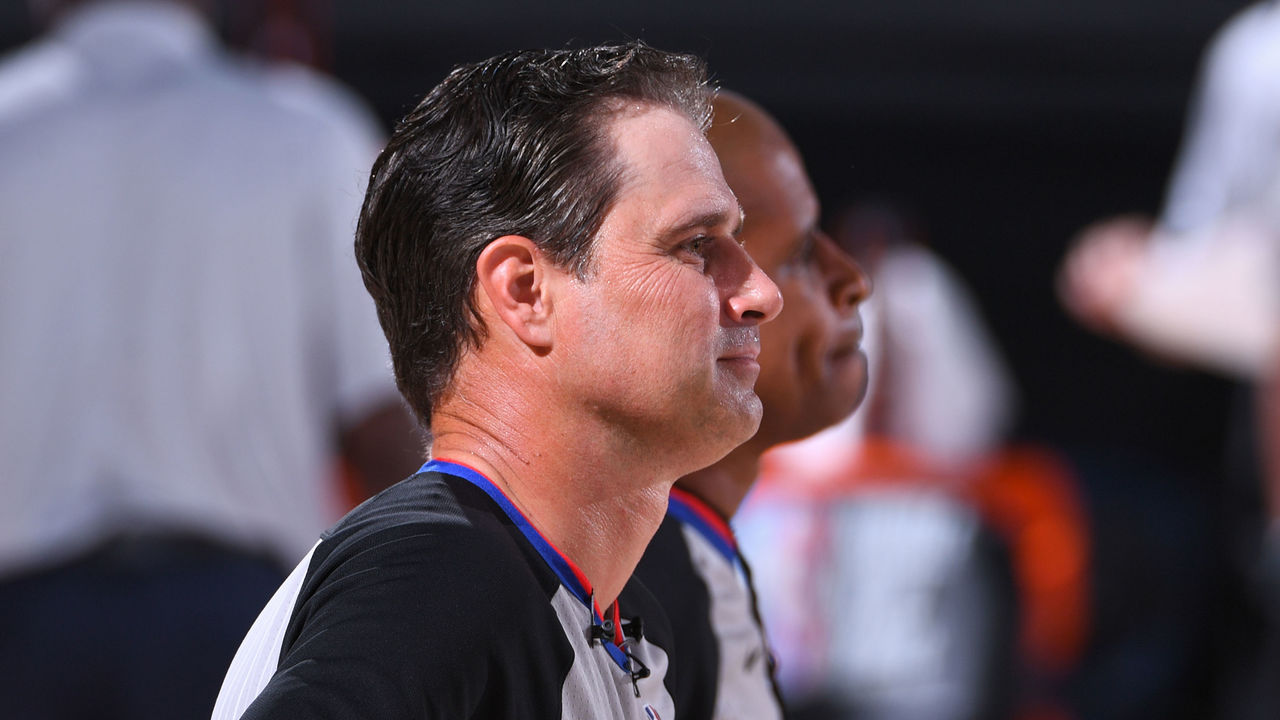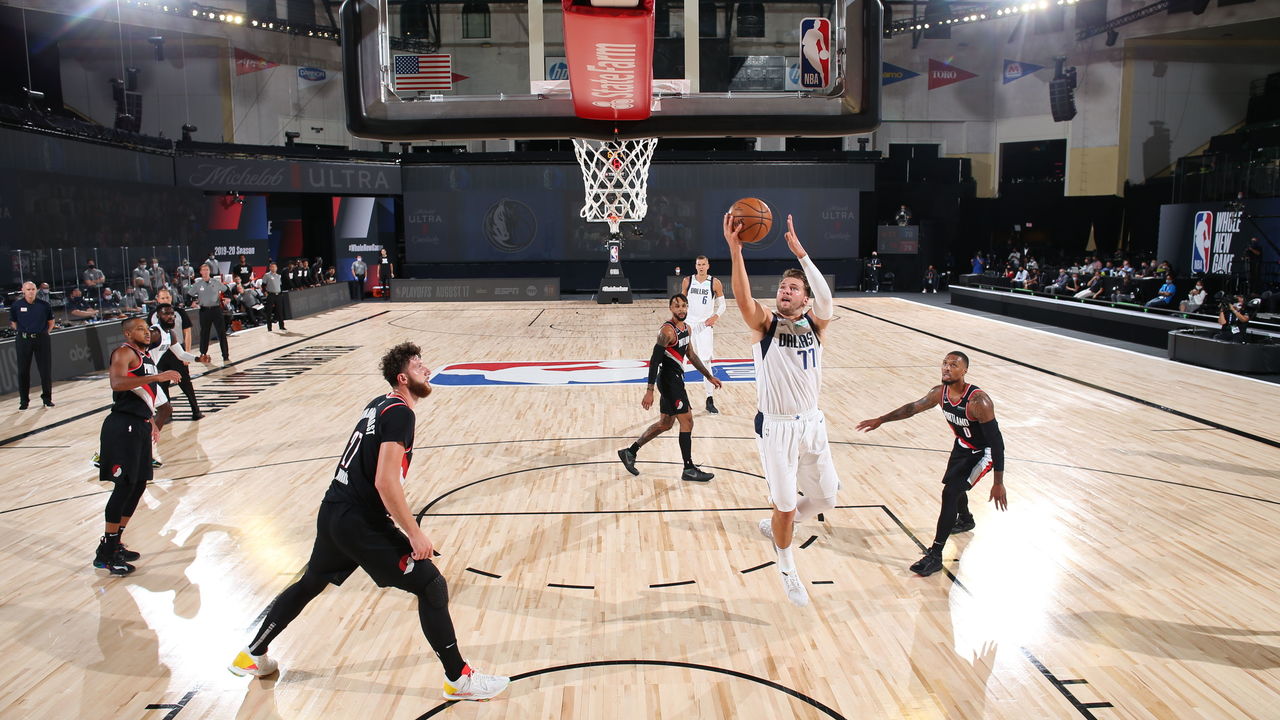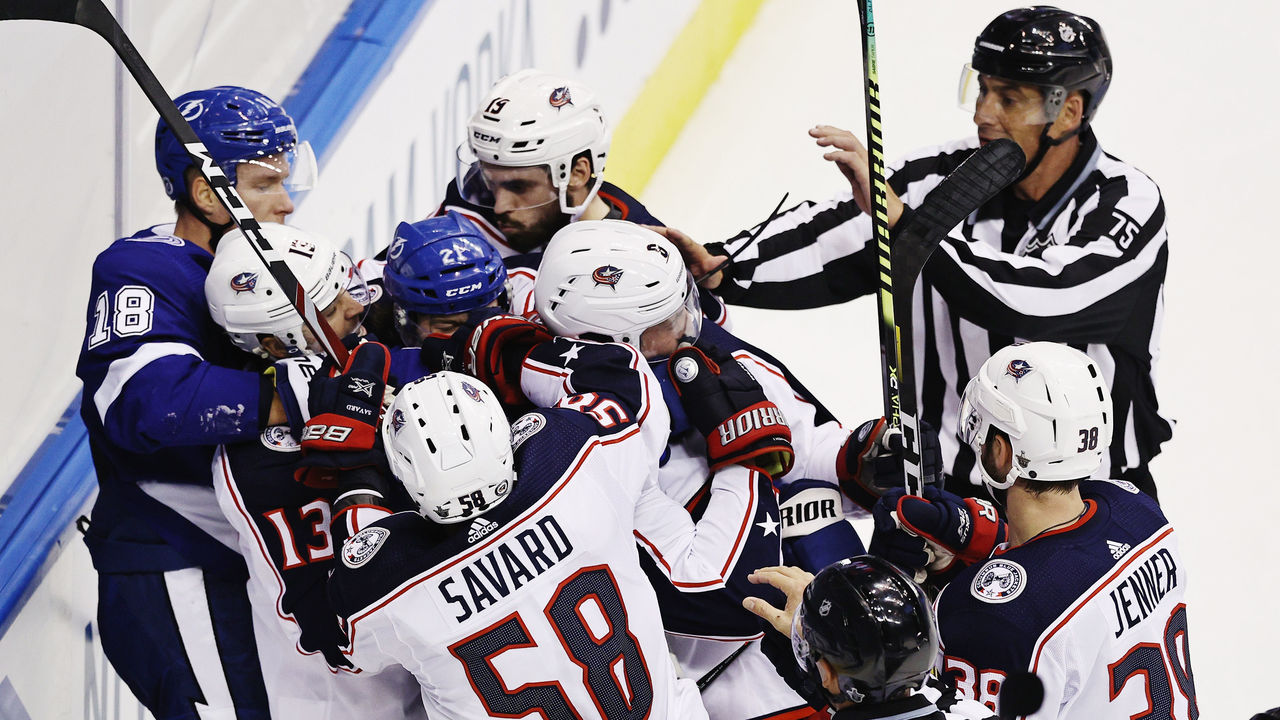The outside looking in: Insights on the bubble and watching from home
Amid the uncharted waters of the NBA and NHL playing postseason games in a bubble in August, the aural and visual experience has been different for fans as well.
As the NHL begins its round of 16 playoff series and the NBA prepares to do the same next week, our feature writers reflected on what's caught their eyes and ears from these alternative operations.
Officially in the loopBetween the virtual fans, empty baseline, and a new courtside camera angle, NBA games have looked different inside the Disney World bubble to everyone watching at home.
But my favorite amendment to the broadcasts isn't aesthetic. What I've enjoyed most is the ability for officials to explain a contentious call directly to viewers, to tell us what they're reviewing and how they came to their decision. The league should never go back.
In a pre-bubble world, viewers would often have to rely on the play-by-play announcer to relay the official's explanation or to hope that courtside mics picked up the conversation with the broadcasters and PA announcers. Sometimes, if a referee's decision was controversial enough, the crew chief would make a postgame statement to the media through a designated pool reporter.
Reporters can still request further clarification on controversial calls, but it has been awesome to hear officiating decisions explained in real time and for the television audience to hear it before the coaches and players in some instances.
Fans often haggle over the ins and outs of certain rules, so this also serves as an educational lesson, whether about a specific detail within a commonly used rule, delivering new knowledge about an uncommon rule, or adding insight into how referees interpret them. A more educated viewer is a more engaged viewer.
 NBA referee David Guthrie (foreground). Garrett Ellwood / NBA / Getty Images
NBA referee David Guthrie (foreground). Garrett Ellwood / NBA / Getty ImagesSometimes the inside look backfires. During the Aug. 3 game between Toronto and Miami, referee David Guthrie explained he didn't call a flagrant foul on the Heat's Goran Dragic for blatantly tripping OG Anunoby because an injury didn't occur - which obviously isn't supposed to be a determinant for that decision. Basketball Twitter exploded, and Guthrie clarified to the media after the game that an injury, in fact, should not be the deciding factor.
Whether or not this added exposure lessens the anti-officiating conspiracy theorists, at least it provides an avenue of accountability directly to the fans.
On a lighter note, after referee Zach Zarba explained a replay decision during a game earlier this week, TNT reporter Jared Greenberg noted that Zarba's fellow officials had been razzing him by a Disney World pool for looking directly into the television camera when explaining his decisions.
It was a silly throwaway in the middle of a seeding game, but it was also a reminder that hearing directly from the officials can help humanize the men and women who often find themselves as the most hated people on an NBA court.
It's often said the best officials are the ones you don't notice during games. But there's also something to be said for fans and viewers coming to appreciate the attention to detail, consistency, and professionalism the best refs exhibit. - Casciaro
The sounds of silenceThe NBA on TV has looked and sounded more or less like the same old NBA to me. I don't mind the piped-in crowd noise as much as I thought I would, and I'm honestly surprised at how effective the fan video boards are at creating the illusion there are spectators in attendance. Using the unique sounds and game-ops gimmicks that the "home" teams use in their own arenas is a nice touch. I can't say I've missed the times when broadcasts cut away from game action to show fan reactions.
Most of the time, I find myself easing into the familiar patterns of NBA game-watching and completely forgetting the players are performing in an empty gym. There are times I'm wrenched out of that sense of familiarity, like when the broadcast shows a zoomed-out wide shot of the entire arena during timeout breaks, providing a jarring reminder of how small the venue is. There's a disconnect between the spectacle I've come to associate with NBA basketball and the notion of it essentially being produced on a sound stage.
When dramatic moments occur, like Devin Booker's buzzer-beating game-winner against the Clippers last week, or Damian Lillard's insane fourth quarter against the Mavericks on Tuesday, it's still strange to miss out on the full-throated fan reaction to which I've grown so accustomed. But there's nothing the league can do about that, and given the circumstances, the gameplay presentation has been about as good as I could've hoped for.
 Bill Baptist / NBA / Getty Images
Bill Baptist / NBA / Getty ImagesI do have a couple of small quibbles: For one, I'm against the gimmicky camera angles, and even though the broadcasts have used them sparingly, I still wring my hands any time they switch to the courtside tracking view, which is almost always partially obstructed and provides little to no sense of what's happening on the far side of the floor.
The games have also been plagued by an uptick in both common foul calls and technical fouls. One theory that's been regularly posited regarding the former is that without the ambient crowd noise, it's easier for refs to hear contact that isn't evident to the naked eye. The same is likely true of the techs - the refs are simply picking up everything the players are saying. Steven Adams predicted this phenomenon before the seeding games began.
"You see, we like to talk behind their backs," Adams told ESPN's Royce Young. "But they can actually hear us now. So there's going to be a lot more Ts."
But while the refs are hearing more of what the players are saying, the viewers are not, thanks to both the artificial crowd noise and the delay that allows the broadcasts to mute out language they deem inappropriate. I'd probably pay an additional League Pass subscription fee to be able to hear the broadcasts unedited. Not only to hear more of the banter and trash talk between the two teams, but so I could determine whether the players are getting their money's worth with these technicals, or whether the refs are being overly touchy. - Wolfond
Life imitates artI'll admit, when the NHL released an instructional video about the restart on July 23, a week before the start of the qualifying round, I was skeptical. Included in the marketing material was a rendering of what the games would look like without fans in the building. The aesthetics were ambitiously sharp for a league that's not exactly known to be outwardly creative. The real thing also rarely resembles the artist's rendering, and that's without the logistical challenges.
With the qualifying series and seeding games wrapped up, I'm pleasantly surprised by the game presentation. Those sleek grey tarps, gigantic vertical LED video screens, and the commanding silver NHL logo stationed in the lower bowls of Rogers Place in Edmonton and Scotiabank Arena in Toronto look almost identical to the rendering. The visual package has proven to be an effective way of blocking out empty seats and keeping the viewer's eyes focused on the action.
 Andre Ringuette / Getty Images
Andre Ringuette / Getty ImagesAnd that's the key to all of this: There's no need for gimmicks when fans have been deprived of the product for months. Give the people the playoff hockey they know and love and get out of the way. There may have been an urge to add bells and whistles, and I'm sure there were conversations between the league and its broadcast partners about spicing up the experience, but I think they've hit the right notes for the most part.
I could live without the digital, prerecorded fans who appear on the rinkside screens to cheer "Let's Go Lightning!" and other generic chants. That addition to the game presentation feels uninspired, something the NHL probably did as a nod to fan engagement.
I also find it odd that the visiting team's goal song plays whenever they score. And that phony hat toss after Connor McDavid's hat trick? Lame. But, again, not a big deal. Those are minor gripes. The dad jokes have made up for it, anyway, with "Still overtime" and "Thank You Fans" appearing on the in-arena digital signage at appropriate times. Nicely done there, NHL.
The NHL is doing a pretty good job of steering into the weirdness pic.twitter.com/mXVMb74o1b
- P-Word Blackburn (@PeteBlackburn) August 9, 2020
Another plus has been the piped-in crowd noise. I have found it to be highly effective; not too loud or out of sync, and suitably authentic. It has created a familiar in-game soundtrack, an ambiance that after a game or two makes you forget there are no fans. You can still hear some hockey sounds - player-to-player communication, the crash of the glass after a hit, the crispness of a well-placed pass - which mixes well with the crowd noise.
As for camera angles, I've found them to be more or less similar to a traditional broadcast, except for the JitaCam, which is positioned near center ice on a crane and provides an overhead view. The JitaCam drives some people crazy, but I like it on replays and power plays.
The cherry on top for the NHL and its broadcast partners has been the presence of Cory Schneider (NBC) and Kevin Bieksa (Sportsnet), two young, insightful player analysts who offer a fresh perspective on the game and its players. - Matisz
A simple plea for moreDuring one of the myriad intermission segments that have aired this month on Sportsnet, Ron MacLean, the point man for Canadian television coverage of the NHL playoffs, teed up a clip from a previous game that he presented to the audience as revelatory.
"You're used to hearing what goes on inside the glass," MacLean said to his studio analysts, former NHL players Kelly Hrudey, Anthony Stewart, and Bieksa. "We as viewers aren't normally privy to all the conversations. But because there aren't fans, we're hearing everything. Here's a great example from Game 2 of the Jets and Flames yesterday."
The feed cut to Winnipeg cycling the puck on a two-man advantage. "Copper, go back door! Back door!" one Jets player yelled, urging Andrew Copp to slide into position to receive a pass. When Copp stayed put and a shot missed the net, the play reset and the same teammate relayed the seconds that were left on the power play: "Forty-five! Forty-five!"
It was painful to see a sequence this mundane dressed up as riveting TV. Hockey is emotional, but the NHL bars telecasters from highlighting all the zeal the sport elicits, which is a shame. Spectators usually can't hear the instructions and barbs that boom at rink level, due either to the hum of the live crowd or to the canned simulation of the noise soundtracking this fanless postseason.
Tuning in from my living room, I haven't minded the piped-in chatter and cheers, or at least haven't found them difficult to ignore. I do wish, though, that the league and its broadcasters would let viewers in on more of the action - not by loudening the ice mics so that we can hear guys swear in real time, but by featuring clips of genuinely consequential things that are said.
 Elsa / Getty Images
Elsa / Getty ImagesThanks to the occasional dispatch from reporters on the ground, like this wrap-up of what The Athletic has overheard in Edmonton, we know that, yes, NHL players are prolifically profane. Chirps can be entertaining, but the appeal of listening in is hardly limited to the naughtiness of their banter. Think of how many moments in a given playoff game - how many pressurized exchanges between teammates or rivals - could be enhanced by the accompanying audio.
Here's a wish list from the play-in round:
How did Milan Lucic and Nathan Beaulieu coordinate their fight off the opening faceoff of Flames-Jets Game 4?
What does a superstar say on the bench as his team tries to score on an impassable defense or a hot goalie?
How do coaches call for line changes and goalie pulls - and how do they react when they go terribly wrong, like when Toronto's William Nylander (the sixth skater onto the ice) or Edmonton netminder Mikko Koskinen (retreated to his net) picked up avoidable too-many-men penalties in elimination games?
What words do coaches employ to spark a slumping player, a la John Tortorella's barking at Pierre-Luc Dubois? (Doubly significant when Dubois recorded a hat trick the following game.)
The NHL is responsible for keeping profanity-laden conversations off TV. The league screens the audio that its national rightsholders want to air, and its policies forbid broadcasters from using clips with profanity (even with a bleep), comments about injuries or strategy, and any remark deemed inflammatory or potentially embarrassing.
Players have no incentive to lobby for our right to eavesdrop on them, guaranteeing the scenario I've outlined is a pipe dream. I'll double down, anyway. Instead of having to sterilize every compilation that makes it to air - breaking: teammate wants defenseman to wheel up ice with the puck - broadcasters should be empowered to enlighten and enliven fans at home. Bleep what needs bleeping and let the stars of the show do the rest. - Faris
Copyright (C) 2020 Score Media Ventures Inc. All rights reserved. Certain content reproduced under license.